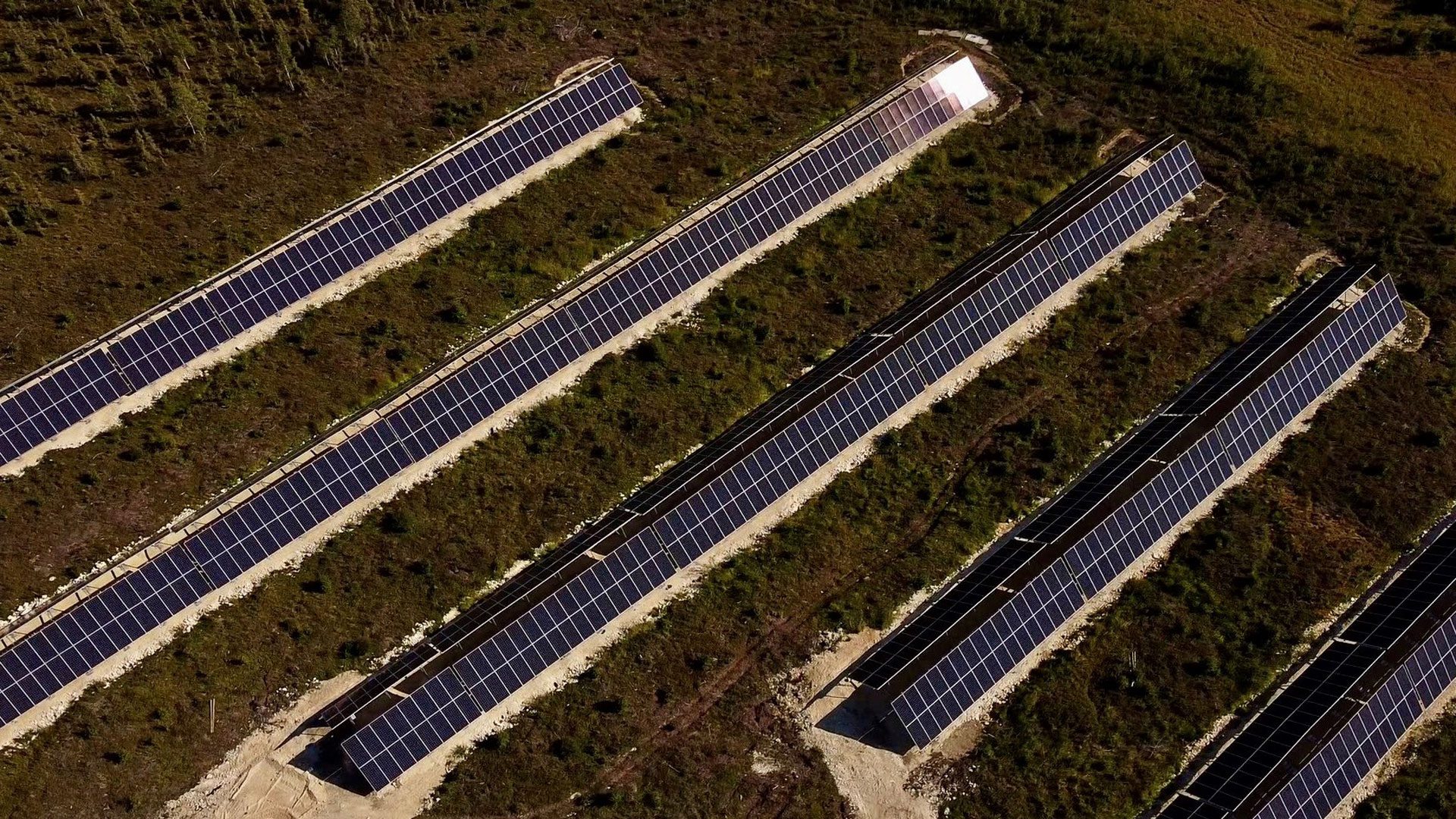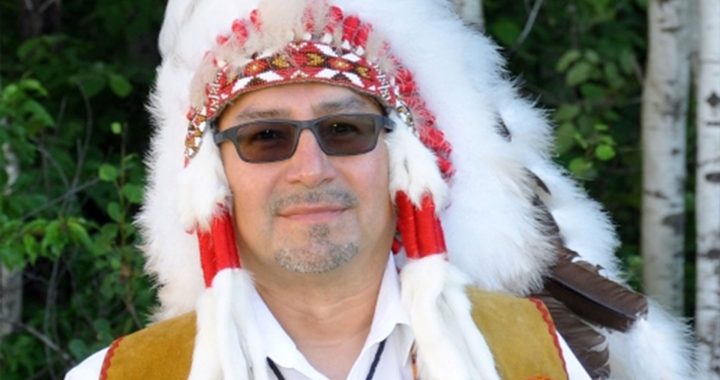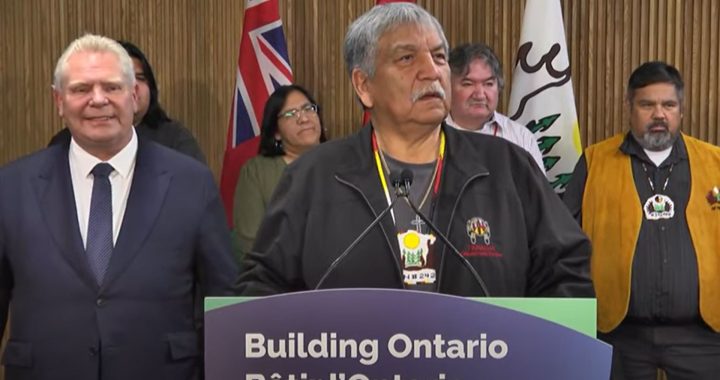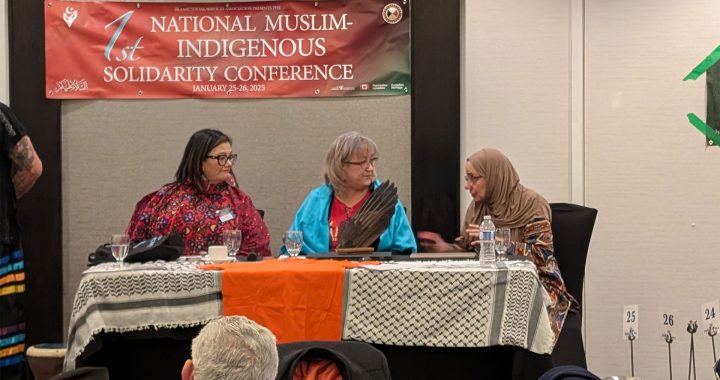The Yukon’s northernmost First Nations community has officially completed an ambitious project that will help it tackle climate change.
On Aug. 17 the government arm of the Vuntut Gwitchin First Nation (VGFN) in Old Crow, Yukon, announced the completion of Sree Vyah, a solar energy project that will reduce its dependence on diesel generators by 24 per cent annually.
“This is a large step forward for our community of Old Crow to move into the energy sector as well as energy sovereign,” Chief Dana Tizya-Tramm tells APTN News.
“This shows the direction that our community is giving to the government and re-establishing our traditional values of balance are being realized with actions today in harmony with new technologies.”
According to a VGFN press release, Sree Vyah consists of “2,160 single sided mono-crystalline panels that are configured in an east-west orientation to maximize solar generation during the long summer daylight hours and the wide arc of the Arctic summer sun.”

The solar array works alongside a 616-kW battery energy storage system and microgrid controller, curtailing the use of the diesel generators by 2,000 hours or 189,000 litres of diesel fuel annually.
The solar array will operate during the spring and summer months to meet the full needs of the community. During sunny days the generators will shut down completely and all energy will be harnessed from the solar array.
The project began in 2019 and the solar array was completed earlier this spring. The entire project was completed in August 2021 with the installation of a battery and micro-grid controller, as well as the complete shut off of diesel generators.
Fighting climate change
The project will help the small Arctic fly-in community which is on the frontlines of climate change.
For the last several years Old Crow has been experiencing the effects of climate change like rapidly melting permafrost and extremely low water levels in the Porcupine River.
The effects prompted Tizya-Tramm to declare a climate emergency in 2019.
The project is a key element in VGFN’s larger vision of reaching net zero carbon emissions by 2030, and it will reduce greenhouse gases by 680 tonne CO2e per year.
“This is huge in so many ways,” Tizya-Tramm says.
The project will also reduce diesel fuel transportation to the community by almost five million litres over the next 25 years.
Economic perks
Another benefit of the project is that its profits go back into the community.
Under a 25-year electricity purchase agreement, VGFN owns the electricity which is generated by the solar array which will be purchased by ATCO Electric Yukon at a rate similar to the cost of diesel generation.
“It’s a huge indicator for the future, especially for rural and Indigenous communities,” Tizya-Tramm says.
“We have tailored an independent power producer as well as an energy purchasing agreement that has allowed us to sell savings to the shareholders of utilities, unlocking new forms of money.”
Tizya-Tramm says the project is far less noisy, too.
“It’s incredible. You can hear a raven calling from the other side of town now actually,” he says.
“The whole community you can hear the difference, you can see the sun reflecting off of the solar panels and this is a warm welcome to our rural First Nation which is actually at the cutting edge of these technologies in the Arctic Circle.”
The community will have to switch back to the generators during the winter months as the solar array won’t be able to produce enough electricity. VGFN is exploring the feasibility of developing wind and other options to further reduce the need to burn diesel during the colder months.










